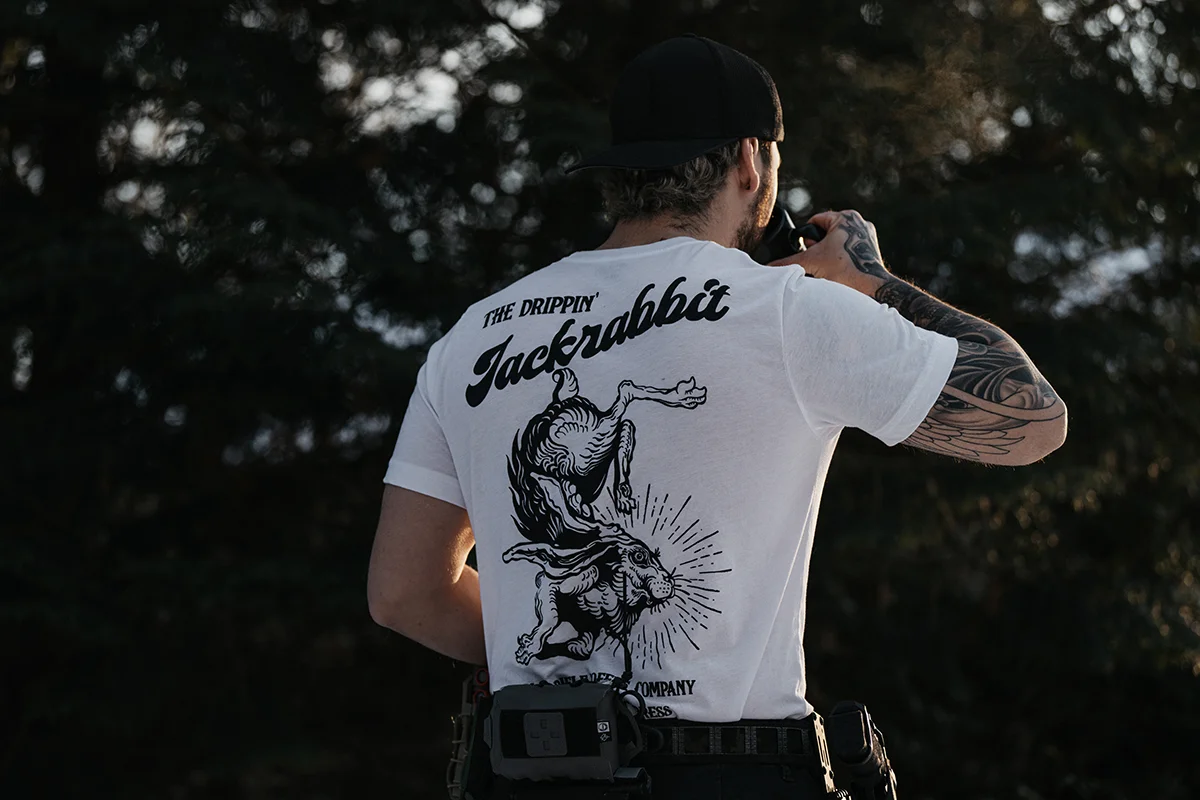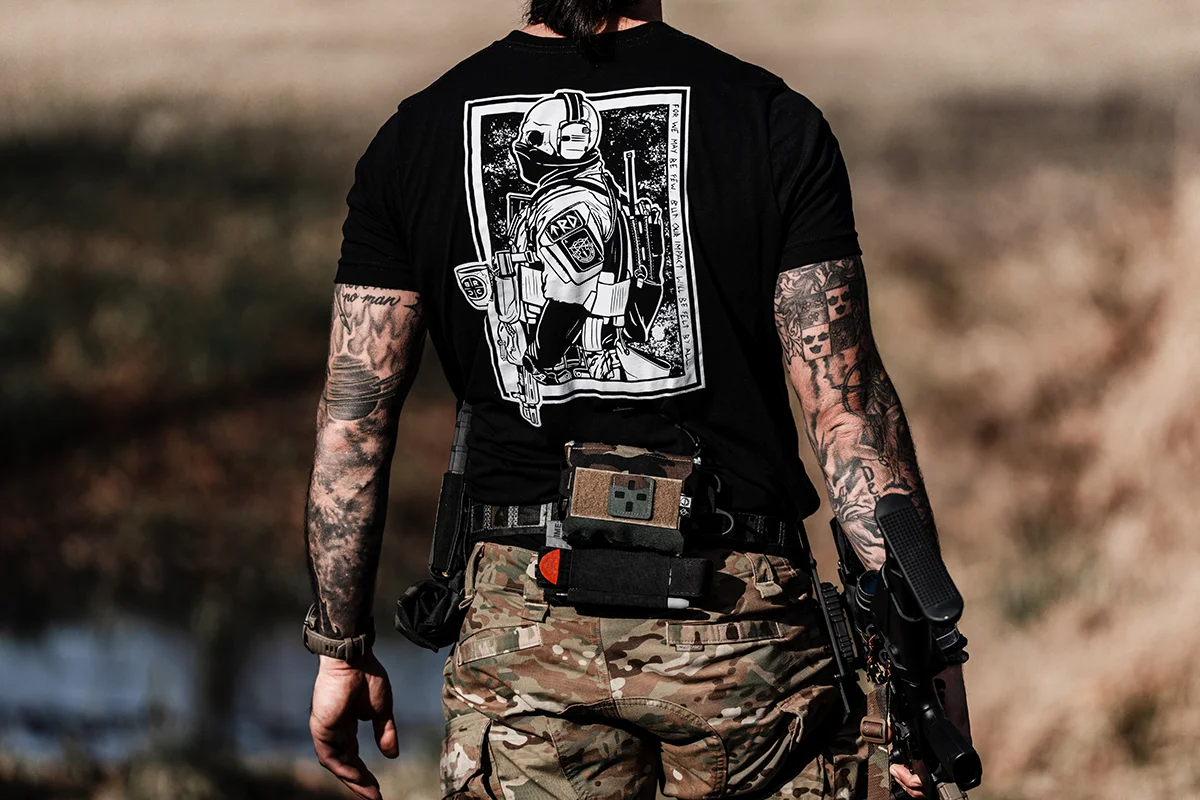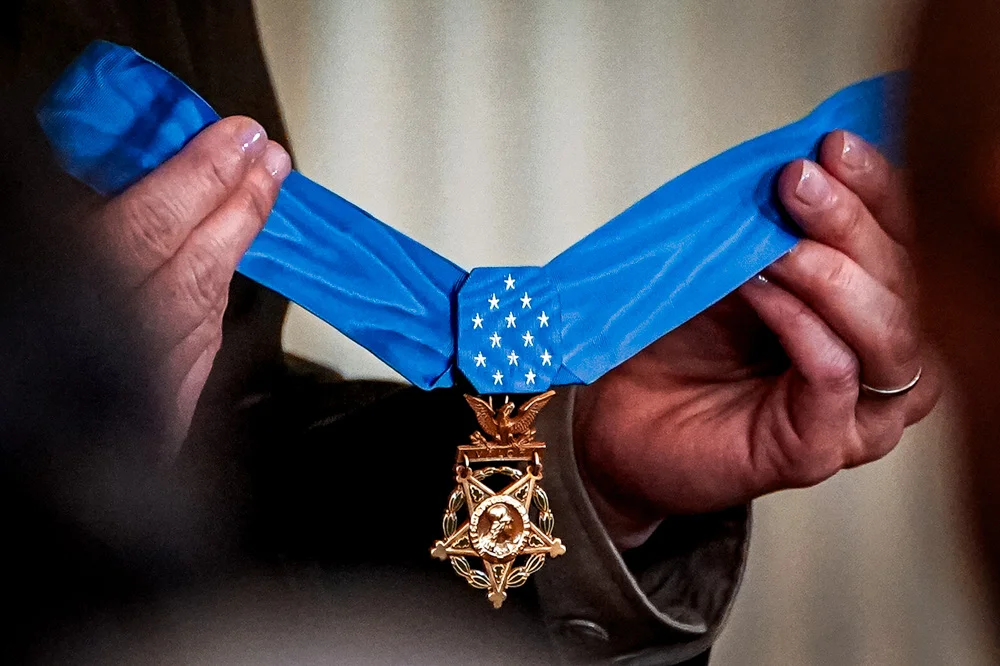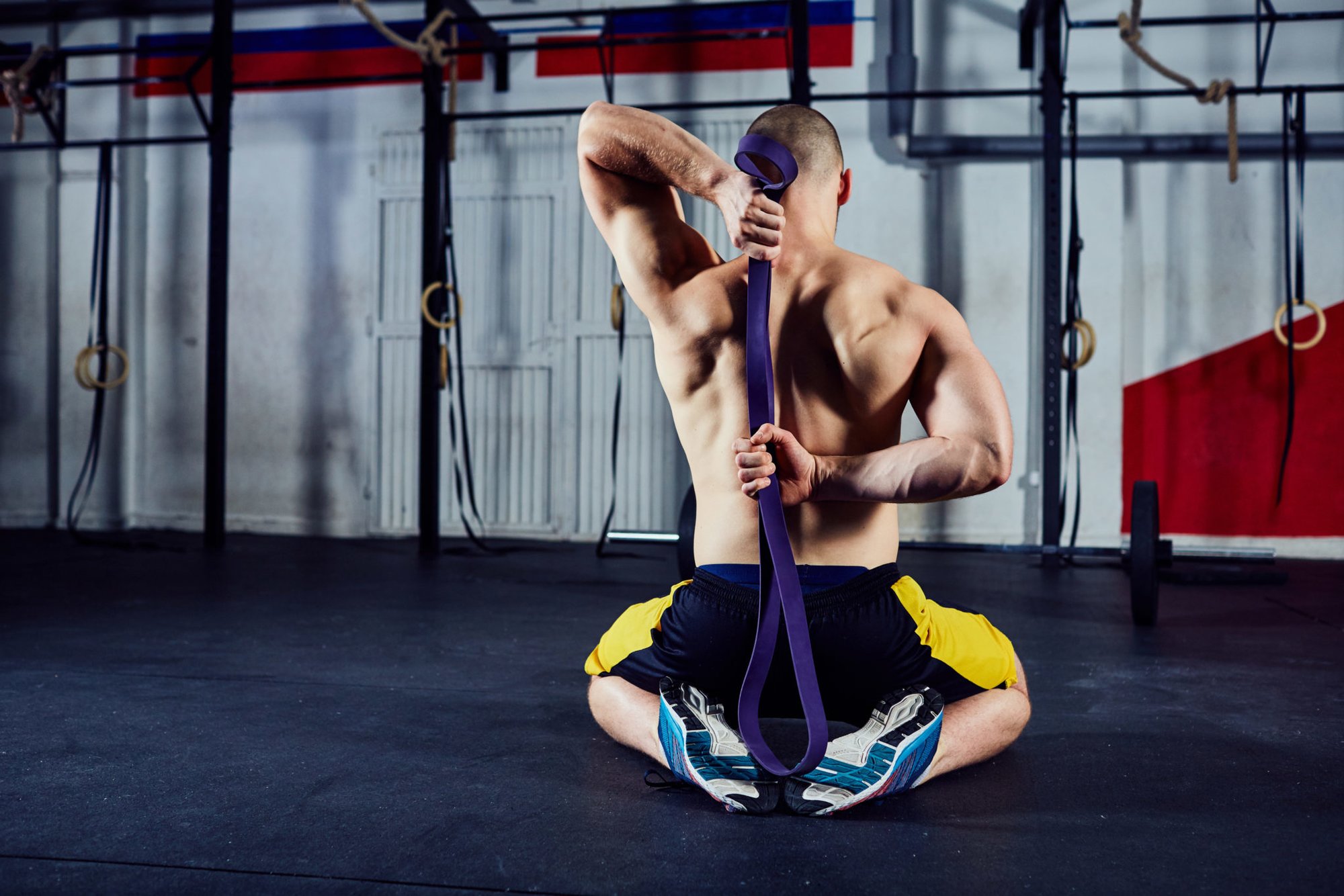
Mobility exercise – young man stretching arms with rubber band
Some people are avid gym-goers, and others can’t wait to hit the trail or the slopes every weekend. Many people commute every day during the week and work in offices or labor-intensive work fields. No matter where you fall in that mix, those continual repetitions result in tight muscles, which eventually pull on your bones improperly and lead to pelvic tilts, ribs out of place, and even muscle strains, tears, and micro-fractures — among other issues.
There’s only one way to prevent (or fix) these issues: Get after your mobility.
“Mobility” is a term that is regularly tossed around in today’s fitness circles, but what does it actually mean? Some define it as stretching before a workout, regardless of whether you are going on a long-distance run or trying to crush a personal record (PR) on deadlift, but that is reductive to the point of being dangerous. Mobility requires time and dedication, which is why many people avoid it or don’t do it enough.
A mobile body ensures that you won’t have those annoying aches and pains that come from everyday life. When your muscles and bones are out of place, even slightly, it creates additional wear and tear that adds to the natural aging process. But spending time on mobility improves musculoskeletal function as well as enhances the function of internal organs, such as the diaphragm, and keeps the relationship between your bones and muscles symbiotic. This leads to longevity in life.
The first step is approaching the pursuit of mobility with an open mind and a willingness to learn. At its most basic level, mobility is any effective means implemented to warm up the musculature of the human body to enable smooth movement through all range of motion for each movable joint. This applies to any and all physical movement, whether you are lifting, running, hiking, or swimming. Your level of mobility directly impacts every aspect of your health and lifestyle, whether that means gearing up to go on a raid in the mountains with your unit, hopping into an ambulance for a 12-hour shift in the city, or spending the day outside with your children. It’s the key to healthy, pain-free living — and it’s worth your effort to improve.
There are a few different ways to go about this. You can achieve mobility through yoga, traditional stretching, or various techniques taught by a chiropractor, sports physician, or even popular figures like Kelly Starret, Stefi Cohen, or Chris Duffin. Any of these activities or trainers will get you on track toward reaching your goals, while simultaneously making you a human version of The Hulk. Your goals will dictate which combination of mobility techniques will apply to your training and/or lifestyle.
Regardless of whether you’re a beginner athlete just getting into the gym or a more seasoned athlete, you’ll need a few tools of the trade to get started. There are a variety of bands, foam rollers, and mobility tools that can be used in conjunction with physical movements to get the most out of your mobility session. It’s easy to find video examples of how to use these tools on YouTube, or you can hit up your local yoga studio or CrossFit gym for more personal instruction. Doing the more advanced movements and stretches can be intimidating, so it’s good to have someone around who knows what to look for and can help guide you.
Once your body starts feeling flexible and agile from all the work you’ve put in, you may feel like you don’t need to do it as much. You’ll be feeling good and eager to get into that badass workout you have planned. There’s no time to mess around with mobility bands and foam rollers when you’ve got steel to crush, am I right? This is when a lot of people stop altogether, allowing those old aches and pains to slowly creep back in — and soon enough, you are behind the power curve. Again. For some, this can even lead to an injury.
Mobility requires dedication, day in and day out, regardless of your fitness level. Remember, maintaining mobility can be just as difficult as achieving it in the first place.
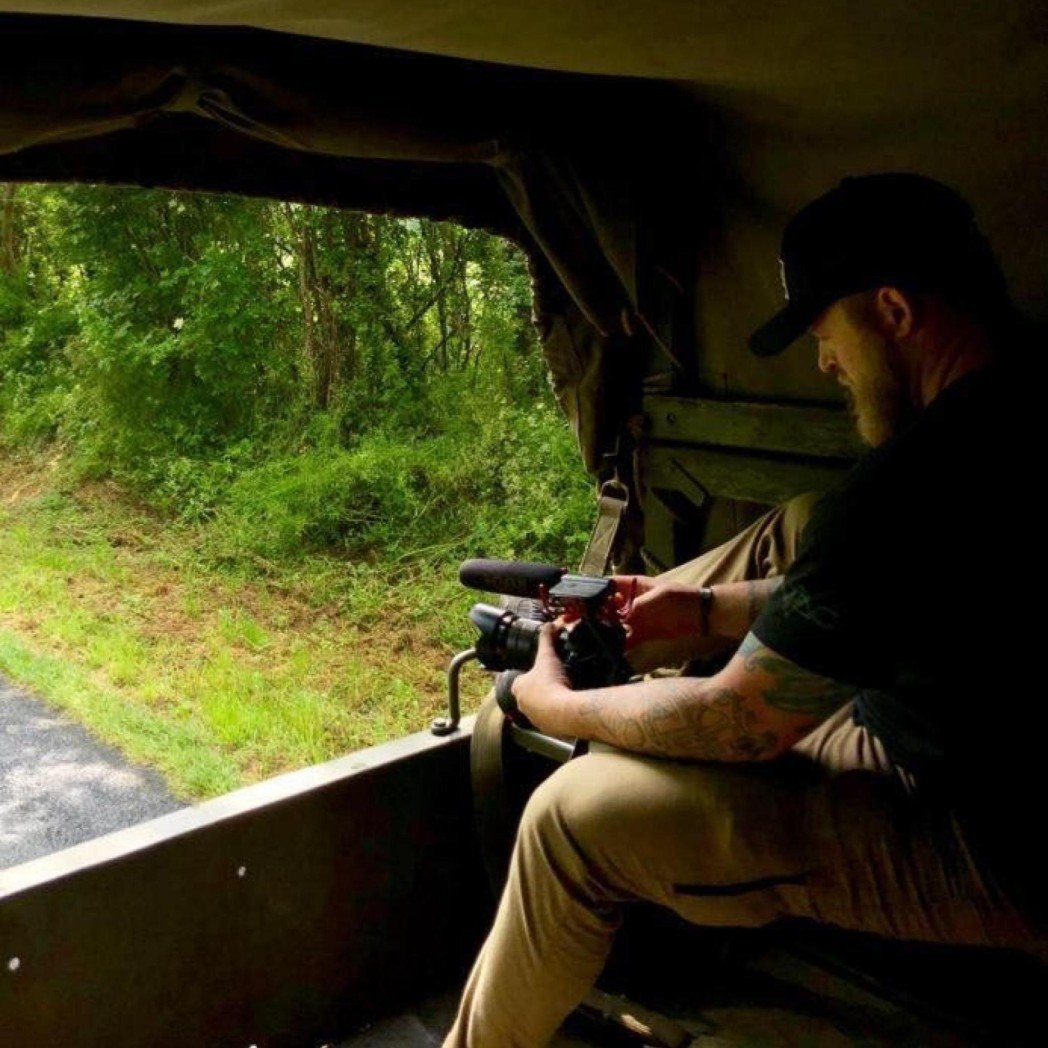
Joshua Skovlund is a former staff writer for Coffee or Die. He covered the 75th anniversary of D-Day in France, multinational military exercises in Germany, and civil unrest during the 2020 riots in Minneapolis. Born and raised in small-town South Dakota, he grew up playing football and soccer before serving as a forward observer in the US Army. After leaving the service, he worked as a personal trainer while earning his paramedic license. After five years as in paramedicine, he transitioned to a career in multimedia journalism. Joshua is married with two children.
BRCC and Bad Moon Print Press team up for an exclusive, limited-edition T-shirt design!
BRCC partners with Team Room Design for an exclusive T-shirt release!
Thirty Seconds Out has partnered with BRCC for an exclusive shirt design invoking the God of Winter.
Lucas O'Hara of Grizzly Forge has teamed up with BRCC for a badass, exclusive Shirt Club T-shirt design featuring his most popular knife and tiomahawk.
Coffee or Die sits down with one of the graphic designers behind Black Rifle Coffee's signature look and vibe.
Biden will award the Medal of Honor to a Vietnam War Army helicopter pilot who risked his life to save a reconnaissance team from almost certain death.
Ever wonder how much Jack Mandaville would f*ck sh*t up if he went back in time? The American Revolution didn't even see him coming.
A nearly 200-year-old West Point time capsule that at first appeared to yield little more than dust contains hidden treasure, the US Military Academy said.

